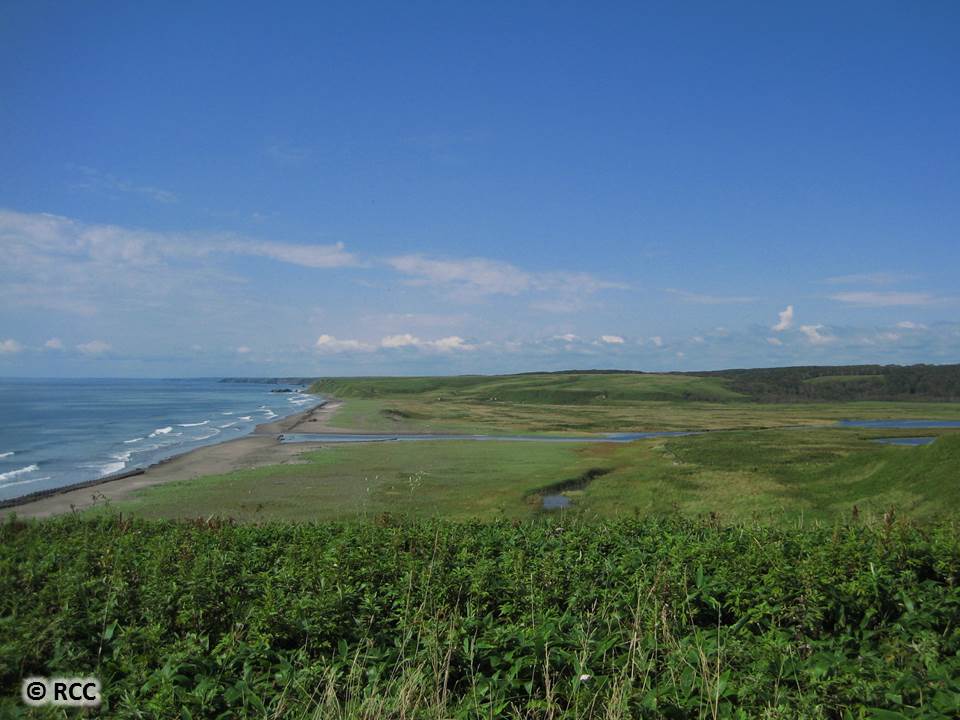
In the landscape
The red-crowned crane is found primarily in wetlands. Our wetlands are
interconnected with other ecosystems across the landscape.

In some parts of Japan, they say that forests are partners/lovers of the
ocean. Over on the other side of the Eurasian continent, in Spain, they
say that forests are mothers of the ocean. What these sayings mean is that
nutrients (especially iron bound with a part of humus) from deciduous forests
support the productivity of the ocean.
 The nutrients enhance growth of phytoplankton, seaweeds, and animals that
eat them (such as oysters) near the mouth of rivers.
The nutrients enhance growth of phytoplankton, seaweeds, and animals that
eat them (such as oysters) near the mouth of rivers.
Rivers and streams are the critical link between forests and the ocean
and also the lifeline for lowland wetlands. Rivers and streams supply and
remove not only the water but also nutrients and aquatic organisms. Tree-lined
watercourses often serve as corridors for mammals such as brown bears and
sika deer.
 Wetlands act as an interface between the terrestrial and aquatic habitats.
Wetlands are also an important source of the iron bound with humus. More about wetlands in Hokkaido.
Wetlands act as an interface between the terrestrial and aquatic habitats.
Wetlands are also an important source of the iron bound with humus. More about wetlands in Hokkaido.
Lakes and ponds slow down the passage of water and nutrients through wetlands.
Open water of lakes and ponds provides habitats for diverse organisms such
as fish and waterfowl.
 Fringes of wetlands and surrounding forests have been converted into crop
fields and pastures. Some species have learned to take advantage of expansion
of arable lands.
Fringes of wetlands and surrounding forests have been converted into crop
fields and pastures. Some species have learned to take advantage of expansion
of arable lands.
The red-crowned crane is a part of biodiversity of the region. Aside from
the crane, wetlands and surrounding forests are home to some endangered
species and some not so rare but nonetheless charismatic species. More
タンチョウ保護研究グループタンチョウ保護研究グループ
〒085-0036
北海道釧路市若竹町9-21
TEL 0154-22-1993
FAX 0154-22-1993
Red-crowned Crane Conservancy
9-21 Wakatake-Cho,
Kushiro, Hokkaido 085-0036
JAPAN
TEL +81-154-22-1993
FAX +81-154-22-1993
あなたは
番目の訪問者です。